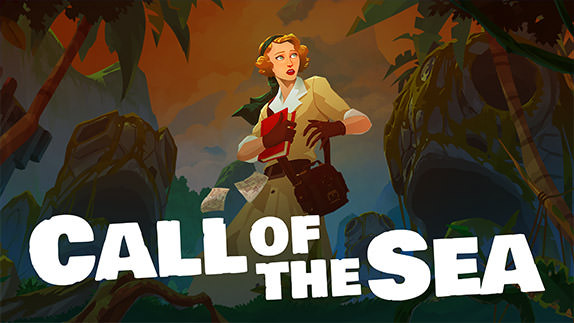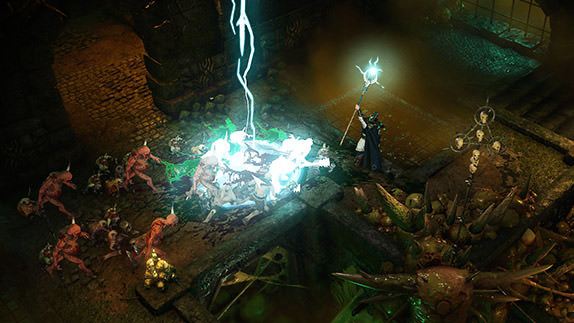Assassin's Creed III Review
 By Marcus Jones
Posted on November 15, 2012
By Marcus Jones
Posted on November 15, 2012
Let’s face it – many gamers have been waiting patiently for Assassin’s Creed III. The final numbered title within the long running series, and the one that supposedly brings closure to everything we’ve seen thus far. Will Desmond save everything? Will the Templars secure their perfect utopia of control and order? Or will the assassins finally prevail and create a new world of peace?
I honestly have no answers to those questions because I’m stuck under a mountain of bugs that even a Day 1 patch didn’t touch upon.
Bugs and everything aside, is the new Assassin’s Creed III worth the time? And in my short answer, yes, yes it is, especially for those that have followed the series and story like I have. The narrative finally draws to a close with the final assassin, Connor, his story before, during, and after the American Revolution.
The game starts out much like ACII and Brotherhood – Desmond is with his friends and fellow modern day assassins searching out a new spot to hide in and conduct their business from. For those who have played Revelations, the spot they find contains the secrets necessary to save the Earth. Shortly after getting set up, the game launches Desmond (and subsequently you the player) back into the annals of history once again, but in a very much bait and switch move by Uibsoft. For roughly the first five hours, Connor is not the antagonist and the massive plot twists used feel cliché and overused. Once you do finally take control of Connor, his story is not just about a fight for independence for the United States, but also one of defense and caring for his own people – the Mohawk tribe – that are being pushed from their lands.
Combat has been overly simplified, requiring you to only use two buttons through most of the game. Using the B button, Connor enters into a blocking stance that will knock away all incoming melee attacks if possible, while X allows you to perform attacks – launching a standalone attack or countering with a deadly twirl of blade/tomahawk/sword. You can mix it up and use other buttons to disarm or stumble opponents by shoving them after blocking, but the majority of the game can be played without those. Disarming only comes into effect when you are pitted against the stronger Hessians, Jagers, and officers. The simplified combat is a nice change, though sometimes I still miss how difficult the first game could be.
Much like the last few games, there is a brotherhood of assassins that can be recruited and trained. Unlike the last couple of games though, the people you recruit are set in stone and have their own stories and identities. Of the 6 possible people to recruit, not a single one is worth remembering. I know one is named Dobby and she is the only female available, but those are the only two reasons I recall her. Aside from their unique identities, players can call them for more than just an arrow storm or to kill targeted people. The other assassins can be used to sneak into enemy areas, snipe enemies with guns, or set up ambush points.
None of these really matter in the long run and I only used the “kill these people” command because it was the easiest and fastest way to use them in-game. You can also send them off on missions across the colonies, where they will gain xp and bring back the spoils of war for Connor. From what I’ve seen though, these missions don't affect overall gameplay other than to help level the assassins, and even that doesn’t change much of anything. Oddly though, I did run two missions at the same time, both dealing with Benedict Arnold – on the one hand, we were showing him how to defend the Continental Army, and on the other, we were chasing him down for being a traitor. Simultaneously! Yay!
Going off of other mechanics that have been updated and put into this game, the Homestead acts as the Monteriggioni of the colonial assassins. Though now instead of just buying and upgrading bits and pieces as you go, Connor must find people to add to the Homestead through Homestead Missions. The people that are added to the area change the landscape and as you do more for them, they level up and become able to craft more for Connor. Instead of crafting bombs like last game, players will use the villagers to craft anything from belt buckles to ales to firearms for the war effort. While at the earlier stages it’s more of a nuisance than anything, once finally populated, the homestead is the only way to access some of the (broken) upgrades for Connor. It’s also one of the easiest ways to make money in the game – by crafting much needed items and sending convoys out to trade goods for money. Too bad it’s pointless up until late-game, since you cannot truly make any money until most of the homesteaders are brought in and leveled.
There are two very neat additions to the game that I thoroughly enjoyed though. The first and most important one is the naval missions and quests. The inclusion of the Aquila and the gameplay surrounding it are fantastic – breathing in some much needed life into the game. It’s really fun being on the open seas and firing a broadside fusillade against an enemy frigate or Man O’ War ship. The missions surrounding them are great as well – searching for Captain Kidd’s treasure, taking down privateers, hunting down templars – it’s all a blast. It’s just a shame that more of the game doesn’t focus on the naval missions since they aren’t required to play to actually finish. There were only a few main missions that actually took place on the high seas, so it seemed very odd to add such a great piece to the game and not even require it beyond a few quick missions.
The other great addition were the inclusion of the Desmond levels. That’s right – you finally get to take Desmond out for a real spin, complete with fighting guards and hiding in the crowd. They’re short, sweet, and few and far between the time spent as Connor, but it was nice to see the Desmond levels included. So far as a protagonist and someone who is supposed to save everyone, he’s been rather pointless and useless in terms of story – he sat in the Animus and we got to see who he was related to. Oooo!
Beyond these new additions and everything, I can easily say the game is fun and a great continuation of the overall story arch that began way back in 2007 (has it been that long?). The world they’ve created in ACIII is open and amazing, but there are just still so many places to improve upon. The cities themselves felt utterly devoid of life at times, and being out in the wilderness felt…empty. While I enjoyed the hunting mechanic and all of the animals roaming around, after about ten minutes they’re just annoying. Even more so when trees decide to randomly throw pissed off bobcats at you – seriously, I had one jump through a tree at me. The QTEs in the game are also kind of pointless, since they only really deal with animal attacks.
I’ll be frank and say I’ve enjoyed a hefty amount of this game. It brings together the best mechanics of the previous ones and does an amazing job at telling a new arch of Desmond’s history and the stories surrounding it. However, what this game also manages to do with aplomb is take every known glitch present in the Assassin’s Creed series, roll them up into one giant ball, and then launch it directly into the heart of ACIII. One mission set during the Battle at Bunker Hill had rather easy full synchronization requirements – sneak aboard both ships without being detected and air assassinate a Hessian. After some of the stuff I’d already done, I expected this challenge to be cake. I was sorely mistaken. Aside from Connor’s glitchy free-running that nearly broke this mission for me, the mission itself took almost an hour and a half to complete something that should have taken maybe fifteen minutes tops.
Why? Enemy AI is able to see me regardless of what happened or what I did. The best example? When I killed someone behind some crates, silently of course, on one side of the ship. The three enemies present on the opposite side of the ship, not to mention opposite side of my cover, suddenly “saw” me somehow and came after me. Full synch broken. After about a dozen tries and multiple paths, I truly realized they would spot me anywhere on the ship magically and without question. I shot arrows down from the crow’s nest in a spot where I knew I was hidden, and yet still found myself miraculously in their line of vision! And that’s just one of the many bugs.
Normally I don’t knock a game for having some minor glitches here and there, but there is a limit. The game is still playable, with or without these problems, but they definitely affect the overall gameplay experience and are extremely detrimental and annoying at times. I’m shocked that Ubisoft would release something so important that still feels like it’s in a beta stage. I understand the timing of it is important – the game starts in modern times on October 30th, 2012 (the same day the game released), but it just set Ubisoft up for a major failure. That, and it seems they felt it necessary to cut costs by firing the Quality Control team.
One facet that I did enjoy were the inclusion of “hacks,” or cheats located within the Animus. These hacks are located by placing markers within the game map and then triangulating the location of the new hack. The catch here is it’s dependent on other AC3 players placing their own markers, since those translate into your game every fifteen minutes or so as the hack you’re searching for. It will be interesting to see in about a year if people will still be placing these markers.
Epilogue missions can also be completed after finishing the main story line, a new addition to the series. These basically tie up any loose ends that might still be sitting around. They’re don’t amount to much, but it was kind of nice to see events like Evacuation Day actually occur. But speaking of the main storyline, I’m incredibly disappointed in what Ubisoft delivered for an ending. It felt…empty, devoid of any meaning or matter to the series. AC1 started the series as a war between Templars and Assassins, something that devolved into saving the world, which further devolved into a choice that cannot be made and an ending that felt anticlimactic and certainly not what I expected. Hell, it didn’t truly elaborate on many things, but it did conveniently set up Ubisoft to continue the franchise in some format, whatever it might be.
Simply Put
My verdict of the game being worth it still stands, but it’s not as polished as it should be and it’s certainly a letdown once gamers get to the end. It might be the case that only diehard fans are going to truly enjoy it.
Note: Assassin's Creed III was reviewed on Xbox 360. A physical copy of the game was purchased by SelectButton.




